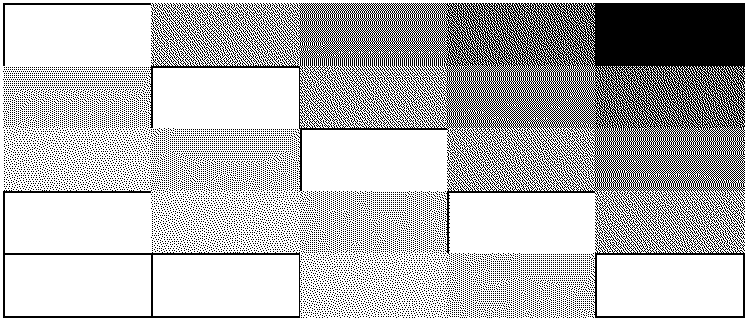Method for data rate selection in a wireless communication system
a wireless communication system and data rate selection technology, applied in the field of wireless communication, can solve the problems of limited resources for the number of users that can be supported by a base station, waste of limited signaling channel bandwidth, and large number of bits to specify the data rate,
- Summary
- Abstract
- Description
- Claims
- Application Information
AI Technical Summary
Problems solved by technology
Method used
Image
Examples
case i
[0077] Case I
[0078] Two fingers assigned by the data mobile m to multipath rays from serving cell 1 to recover energy and one finger assigned to neighboring cell 2 to decode control information:
[0079] Ec / Nt (l,m,k) 2 Ec / Nt ( 1 , m , k ) = ( Eb / Nt ) PG = 1 d( k + d ) ( c 1 / ( c 1 + c 2 ) ) { [ 1( I 0 / E c1 sum ) -1 d( k ) - ( 1 d( k ) +1 vo( k )) ( 1 - c 1 ) ( c 1 + c 2 ) ] (c 2 d( k + d ) +2 vo( k + d )) ( 2 d( k ) +2 vo ( k )) + ( 1 - c 1 )( c 1 + c 2 )( 1 d ( k ) +1 vo( k )) } + = 1 d( k + d ) ( c 2 / ( c 1 + c 2 ) ) { [ 1( Io / E cl sum ) -1 d( k ) - ( 1 d( k ) +1 vo( k )) ( 1 - c 2 ) ( c 1 + c 2 ) ] ( 2 d( k + d ) +2 vo( k + d )) ( 2 d ( k ) +2 vo( k )) + ( 1 - c 2 )( c 1 + c 2 )( 1 d( k ) +1 vo( k )) } EQUATION A1
[0080] where:
[0081] k is the instant of measurement, i.e when the reverse feedback rate per code and antenna information (RAI) is computed
[0082] k+d is the instant of prediction, i.e. time of data reception; d is approximately three slots (3.75 ms).
[0083] d.sub.j...
case ii
[0094] Case II
[0095] One finger assigned to a ray from serving cell 1 to recover energy and two fingers assigned to neighboring cells 2 and 3 respectively to decode control information. 3 Ec / Nt ( 1 , m , k ) = ( Eb / Nt ) PG = 1 d( k + d ) { [ 1( Io / E cl sum ) -1 d( k ) - ( 1 d( k ) +1 vo( k )) ( 1 - c 1 ) c 1 ] [ (c 2 d( k + d ) +2 vo( k + d )) ( 2 d( k ) +2 vo( k )) 2 (2 + 3 )+(c 3 d( k + d ) +3 vo( k + d )) 3 ( 3 d( k ) +3 vo( k ))(2 + 3 ) ] + ( 1 - c 1 )c 1( 1 d( k ) +1 vo( k ))} EQUATION A2
[0096] where, in addition:
[0097] .beta.j is the ratio of path losses to the mobile of neighbor cell j to serving cell 1. This is estimated as the ratio of the pilot energy of cell j to that of cell 1 assuming equal pilot power fractions.
[0098] The Ec / Nt in the above expression is divided by M where M is the number of W-ary (e.g. W=16) Walsh codes available in D2. This yields the desired C / I per code for the cell 1.
PUM
 Login to View More
Login to View More Abstract
Description
Claims
Application Information
 Login to View More
Login to View More - R&D
- Intellectual Property
- Life Sciences
- Materials
- Tech Scout
- Unparalleled Data Quality
- Higher Quality Content
- 60% Fewer Hallucinations
Browse by: Latest US Patents, China's latest patents, Technical Efficacy Thesaurus, Application Domain, Technology Topic, Popular Technical Reports.
© 2025 PatSnap. All rights reserved.Legal|Privacy policy|Modern Slavery Act Transparency Statement|Sitemap|About US| Contact US: help@patsnap.com



